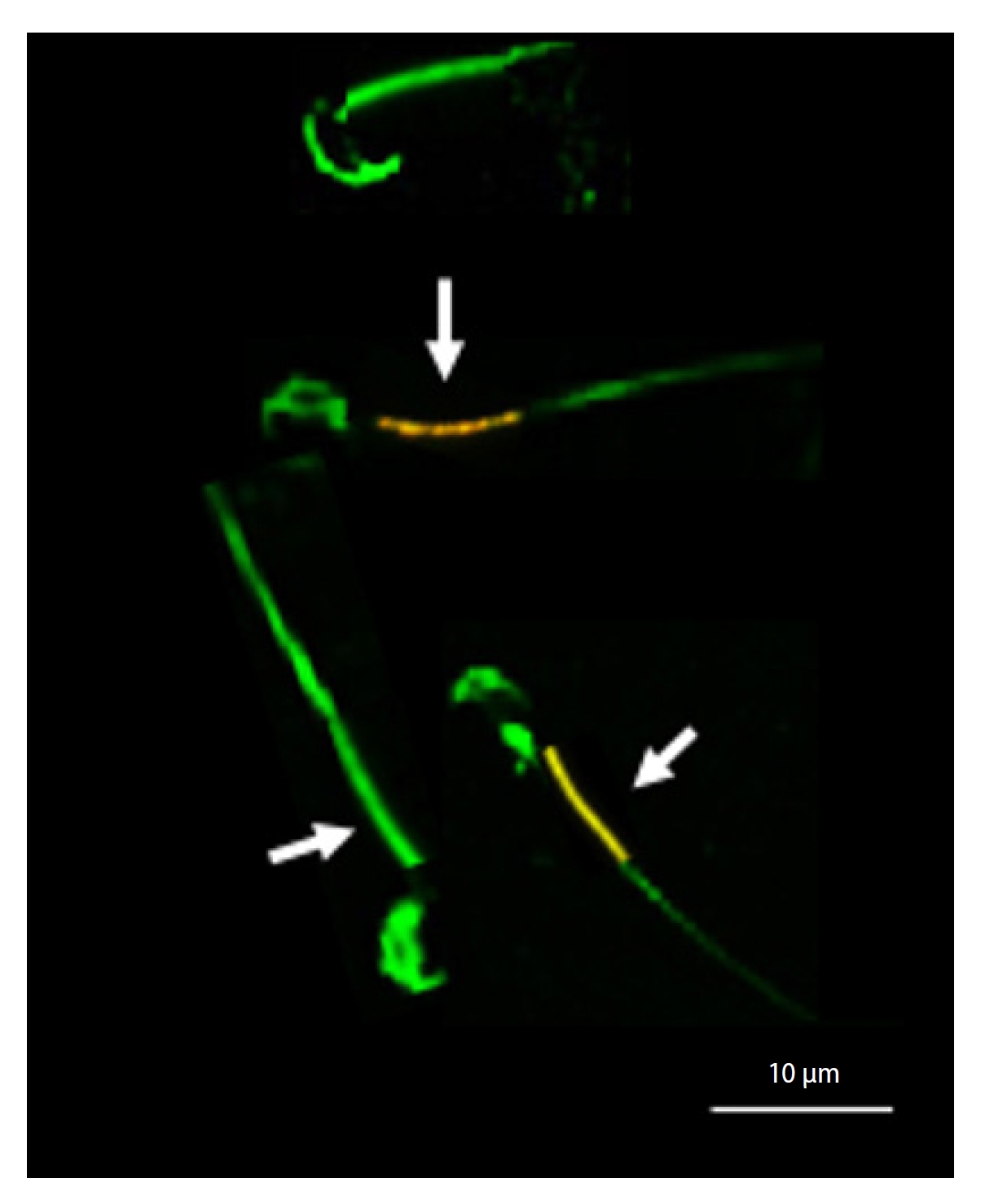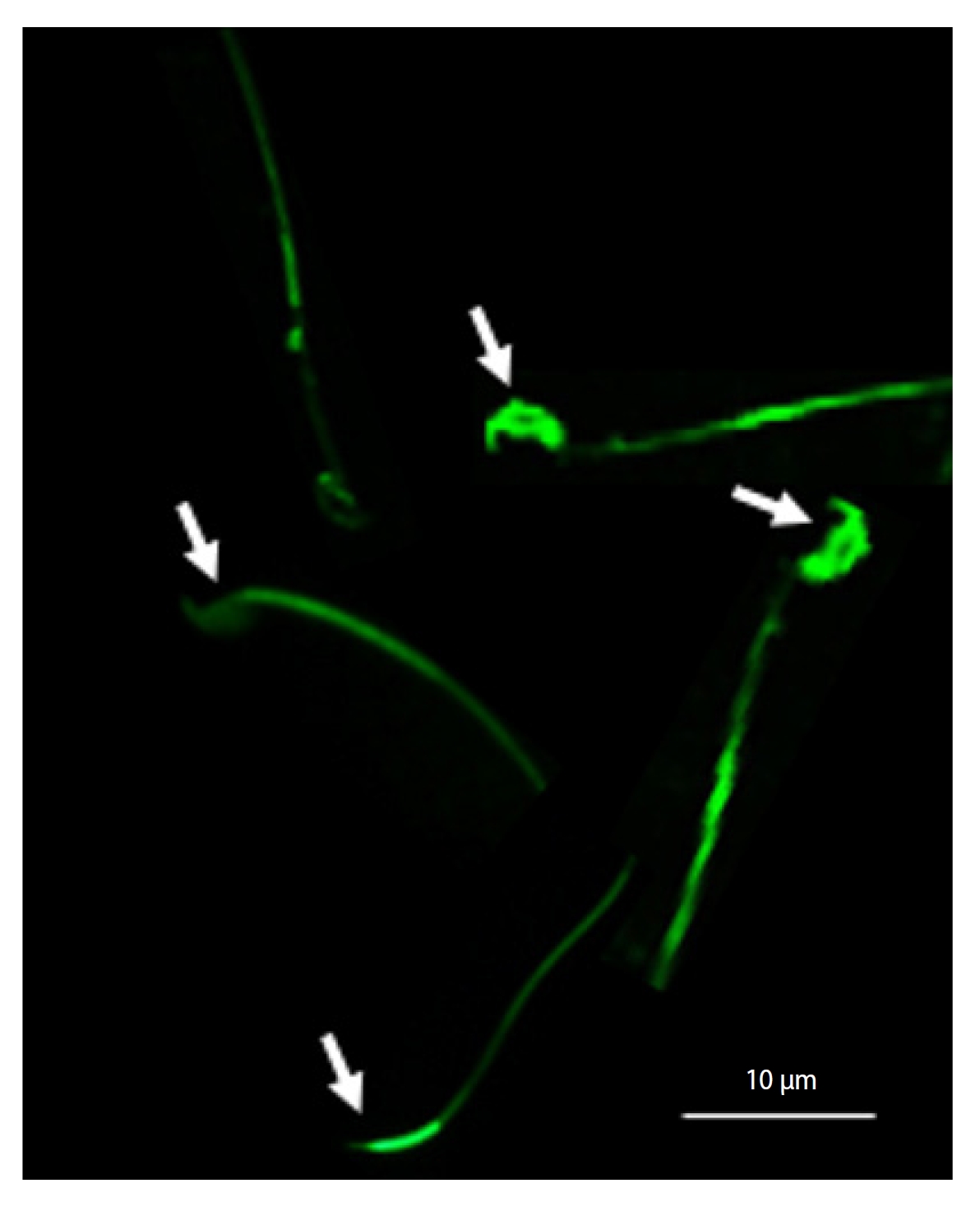5. Spis E, Bushkovskaia A, Isachenko E, Todorov P, Sanchez R, Skopets V, et al. Conventional freezing vs. cryoprotectant-free vitrification of epididymal (MESA) and testicular (TESE) spermatozoa: three live births. Cryobiology 2019;90:100-2.


6. Zhang X, Lu X, Li J, Xia Q, Gao J, Wu B. Mito-Tempo alleviates cryodamage by regulating intracellular oxidative metabolism in spermatozoa from asthenozoospermic patients. Cryobiology 2019;91:18-22.


7. Ghorbani M, Vatannejad A, Khodadadi I, Amiri I, Tavilani H. Protective effects of glutathione supplementation against oxidative stress during cryopreservation of human spermatozoa. Cryo Letters 2016;37:34-40.

8. Giaretta E, Estrada E, Bucci D, Spinaci M, Rodriguez-Gil JE, Yeste M. Combining reduced glutathione and ascorbic acid has supplementary beneficial effects on boar sperm cryotolerance. Theriogenology 2015;83:399-407.


9. Rezaeian Z, Yazdekhasti H, Nasri S, Rajabi Z, Fallahi P, Amidi F. Effect of selenium on human sperm parameters after freezing and thawing procedures. Asian Pac J Reprod 2016;5:462-6.

12. Nel A, Xia T, Madler L, Li N. Toxic potential of materials at the nanolevel. Science 2006;311:622-7.


13. Zhandi M, Talebnia-Chalanbar A, Towhidi A, Sharafi M, Yousefi AR, Hussaini SM. The effect of zinc oxide on rooster semen cryopreservation. Br Poult Sci 2020;61:188-94.


15. Dawei AI, Zhisheng W, Anguo Z. Protective effects of Nano-ZnO on the primary culture mice intestinal epithelial cells in in vitro against oxidative injury. World J Agric Sci 2010;6:149-53.
18. Watanabe T, Endo A. Effects of selenium deficiency on sperm morphology and spermatocyte chromosomes in mice. Mutat Res 1991;262:93-9.


19. Noack-Fuller G, De Beer C, Seibert H. Cadmium, lead, selenium, and zinc in semen of occupationally unexposed men. Andrologia 1993;25:7-12.


20. Zhang J, Wang H, Yan X, Zhang L. Comparison of short-term toxicity between Nano-Se and selenite in mice. Life Sci 2005;76:1099-109.


21. Khalil WA, El-Harairy MA, Zeidan AE, Hassan MA. Impact of selenium nano-particles in semen extender on bull sperm quality after cryopreservation. Theriogenology 2019;126:121-7.


22. Nateq S, Moghaddam G, Alijani S, Behnam M. The effects of different levels of Nano selenium on the quality of frozen-thawed sperm in ram. J Appl Anim Res 2020;48:434-9.

23. Zhu C, Li L, Liu Q, Li J, Peng G, Zhang L, et al. Effect of selenium nanoparticles (SeNPs) supplementation on the sperm quality of fish after short-term storage. Aquaculture 2023;562:738876.

27. Jahanbin R, Yazdanshenas P, Amin Afshar M, Mohammadi Sangcheshmeh A, Varnaseri H, Chamani M, et al. Effect of zinc nano-complex on bull semen quality after freeze-thawing process. Anim Prod 2015;17:371-80.
29. Seifi-Jamadi A, Kohram H, Zareh-Shahne A, Dehghanizadeh P, Ahmad E. Effect of various concentrations of butylated hydroxyanisole and butylated hydroxytoluene on freezing capacity of Turkman stallion sperm. Anim Reprod Sci 2016;170:108-13.


31. Tortora-Perez JL. The importance of selenium and the effects of its deficiency in animal health. Small Rumin Res 2010;89:185-92.

32. Caldamone AA, Freytag MK, Cockett AT. Seminal zinc and male infertility. Urology 1979;13:280-1.


33. Dorostkar K, Alavi-Shoushtari SM, Mokarizadeh A. Effects of in vitro selenium addition to the semen extender on the spermatozoa characteristics before and after freezing in water buffaloes (Bubalus bubalis). Vet Res Forum 2012;3:263-8.


34. Khoram Abadi F, Khodaei Motlagh M, Moradi MH. Effect of in vitro selenium nanoparticles addition to the semen extender on the spermatozoa parameters after freezing in Farahani ram. J Anim Res 2017;30:301-7.
35. Farhadi F, Towhidi A, Shakeri M, Seifi-Jamadi A. Zinc oxide nanoparticles have beneficial effect on frozen-thawed spermatozoa of Holstein bulls. Iran J Appl Anim Sci 2022;12:49-55.
36. Isaac AV, Kumari S, Nair R, Urs DR, Salian SR, Kalthur G, et al. Supplementing zinc oxide nanoparticles to cryopreservation medium minimizes the freeze-thaw-induced damage to spermatozoa. Biochem Biophys Res Commun 2017;494:656-62.


37. Mankad M, Sathawara NG, Doshi H, Saiyed HN, Kumar S. Seminal plasma zinc concentration and alpha-glucosidase activity with respect to semen quality. Biol Trace Elem Res 2006;110:97-106.


38. Safa S, Moghaddam G, Jozani RJ, Daghigh Kia H, Janmohammadi H. Effect of vitamin E and selenium nanoparticles on post-thaw variables and oxidative status of rooster semen. Anim Reprod Sci 2016;174:100-6.


39. Arruda LC, Tobal LF, Carneiro GF, Guerra MM. Zinc oxide nanoparticles alter the membrane potential of mitochondria from post-thawed ram spermatozoa. Small Rumin Res 2021;202:106466.

40. Fang L, Bai C, Chen Y, Dai J, Xiang Y, Ji X, et al. Inhibition of ROS production through mitochondria-targeted antioxidant and mitochondrial uncoupling increases post-thaw sperm viability in yellow catfish. Cryobiology 2014;69:386-93.


41. Huang YL, Tseng WC, Cheng SY, Lin TH. Trace elements and lipid peroxidation in human seminal plasma. Biol Trace Elem Res 2000;76:207-15.














